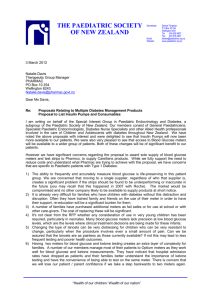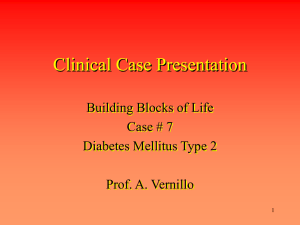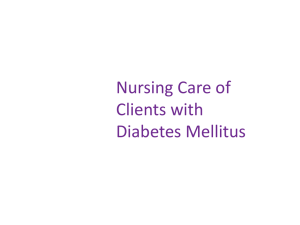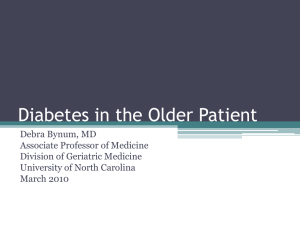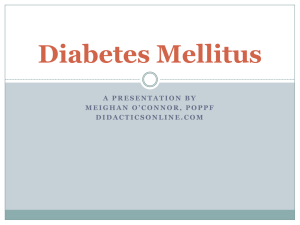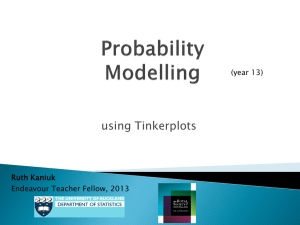here - Alström Syndrome UK Support Group
advertisement
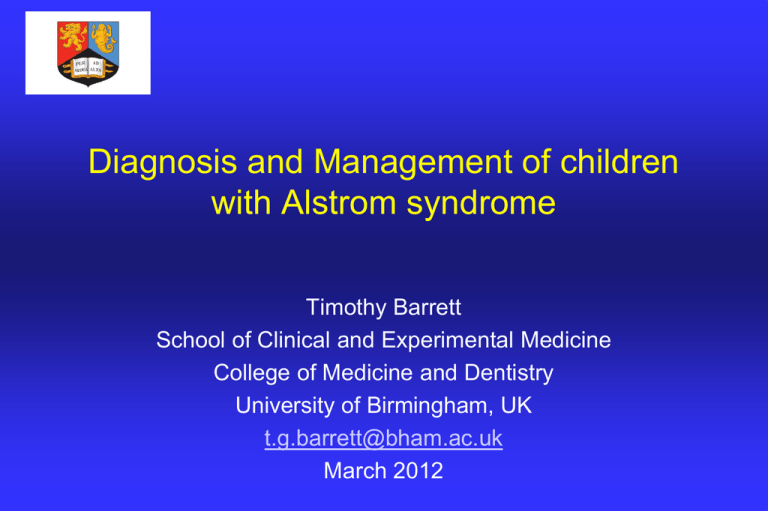
Diagnosis and Management of children with Alstrom syndrome Timothy Barrett School of Clinical and Experimental Medicine College of Medicine and Dentistry University of Birmingham, UK t.g.barrett@bham.ac.uk March 2012 Summary • Case studies • System assessments Child A: White European family • • • • • • • • • Healthy baby Photophobia, retinal dystrophy in infancy Obesity from infancy Deafness Struggled at school Diagnosed at 7 years Fatty Liver disease and glucose intolerance 13 years insulin resistant diabetes Heterozygous mutations in ALMS1 Children B and C (S Asian, parents first cousins) • • • • • Healthy babies, obese in infancy Diabetes at 6 months treated with tablets Rod-cone dystrophy but no photophobia Profound sensorineural deafness Seen in Alstrom clinic aged 8 and 10 years – Not obese, not diabetic • Sideroblastic anaemia in Sara aged 11 years • Mutations in SLC19A2 gene (Rogers syndrome) Child D (South Asian, parents first cousins) • • • • • • • Photophobia in first 3 months Cardiomyopathy Severe developmental delay with microcephaly Sensorineural deafness Slim, feeding difficulties Now aged 6 years, attends Alstrom clinic Homozygous ALMS1 mutation; probable coinheritance of microcephaly Child E: (South Asian, parents first cousins) • • • • • • Obesity onset in infancy Retinal dystrophy in childhood, loss of night vision Mild learning difficulties Flat feet Extra digits removed at birth, when questioned Hyperechogenic kidneys on antenatal scan, now normal • Homozygous mutation in BBS1 Child F: boy, white European parents • Normal birth, failed hearing test: sensorineural loss at high frequencies, now hearing aids • BMI: overweight but not obese • No eye problems noted as a baby, no nystagmus • Now aged 5 poor visual acuity, sunlight hurts eyes • Mild learning difficulty • Family history of diabetes on Mother’s side • On examination, possible dental enamel problem • Initial Alstrom screen negative Who gets genetic testing? DD Alstrom, Bardet Biedl, TRMA, Lowe’s, others Chilhood retinal dystrophy One of Normal weight Obesity Diabetes Normal heart,lipids and glucose tolerance High blood lipids Cardiomyopathy Test for AS gene Consider co-inherited diseases No test unless typical features develop ? Add photophobia Sibling uncle, aunt or cousin with Alstrőm syndrome Test for AS gene Who gets genetic testing in childhood? Infancy onset retinal dystrophy with photophobia Infancy onset cardiomyopathy Relative with Alstrom syndrome What needs to be offered at MDT annual clinics? AS-UK Ophthalmology Endocrine Cardiology Dietetics Counselling CNS Genetics Paediatric cardiology • Annual ECG: look for heart strain, abnormal rhythm • Annual Echocardiogram: wall movement abnormalities • ? Blood test for brain natiuretic peptide • ? Cardiac MRI • Decision on whether/when to add in medicines Vision assessment • Ophthalmology referral usually done locally. We will offer at BCH if local provision inadequate. – Progressive loss of vision over childhood – Potential for cataracts but significance? • Low vision aids • Early development of low vision skills • Preparation for college for the blind: – Career counselling Dietetics • Annual BMI, body composition by bioimpedance • Completion of food diary • Dietetic advice – Healthy eating; protein, carbohydrate, fat, vitamins and minerals to allow healthy growth – Calorie intake to same age child of average weight • Exercise advice – Within limits of mobility, vision • ? Does fat mass reduction help insulin resistance? Clinical psychology support • • • • • • Identifying emotional or behavioural issues Both child and parents Need for CAMHS referral? Need to liaise with SENCO at school? Follow-up: local children ongoing care Follow-up other children: Liaise with local clinical psychology services Physiotherapy • Assessment of mobility, posture • Teaching posture and exercises – Mostly positional upper spine kyphosis, correctable with posture training – Occasional kyphoscoliosis – No clear enthesitis in children Hearing assessment • Audiometry – Classically high tone sensorineural deafness – Progressive – Hearing aids in school – ? Repeated every 2 years – Mostly done locally but we do offer at BCH if not done within last 2 years Diabetes mellitus • Progression of insulin resistance to type 2 diabetes • Screen from puberty (10yrs) with HbA1c, fasting glucose. • If abnormal, then home blood glucose monitoring. • ? Should we do glucose tolerance tests? Endocrine/metabolic • Puberty: look for delayed puberty: >14yrs girls, >16yrs boys • Thyroid: Baseline at diagnosis. • Liver function: annually • Fasting lipids and cholesterol: annually • ? Should we screen for thyroid disease more frequently? Renal • Annual renal function: urea, creatinine • Ambulatory blood pressure monitoring • Early morning urine for albumin creatinine ratio – If raised, then repeat x 2. • ? Need to audit ambulatory blood pressure monitoring Bladder function • History of bedwetting, accidents – First optimize glucose control – Exclude or treat infections, ? diabetes insipidus • Urodynamic assessment – Bladder volumes, detrusor muscle instability Other • Respiratory? • Dermatology • ENT Thankyou! • • • • • • • • Lead paediatric service: Timothy Barrett Clinic administrator: Lesley Porter Paediatric cardiologist: Ashish Chikermane Paediatric diabetes specialist nurse: Kirsty Mobberley Paediatric Dietician: Hazel Riggall Clinical Psychologist: Jenny Allman Physiotherapy: Liz Wright, Gemma Mears Genetics: Denise Williams
